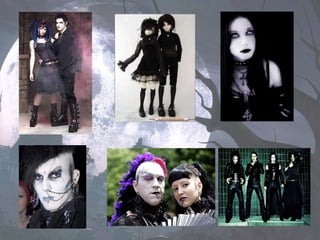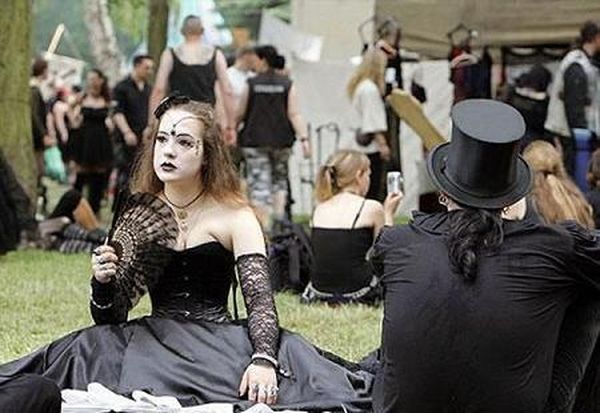Gothic culture is a subculture that emerged in the 1980s in the United Kingdom, and has since spread to various parts of the world. It is characterized by a fascination with the darker aspects of life, including death, decay, and the supernatural. The gothic aesthetic is often associated with Victorian and medieval architecture, as well as the literature, art, and music of these periods.
Gothic fashion is an integral part of gothic culture, and often involves wearing dark clothing and makeup, as well as incorporating elements such as crosses and skulls into one's appearance. Goths may also be interested in body modification, such as tattoos and piercings.
Music is also an important aspect of gothic culture, with bands such as Bauhaus, Siouxsie and the Banshees, and The Cure being considered key players in the development of the gothic music genre. Gothic music is often characterized by a bleak and introspective tone, and may incorporate elements of punk, post-punk, and industrial music.
Gothic literature, which includes works such as Dracula and Frankenstein, is often concerned with themes of horror, the supernatural, and the unknown. It is also characterized by its use of vivid and descriptive language, as well as its focus on the darker aspects of human nature.
Gothic culture has often been misunderstood and misrepresented, with many people equating it with Satanism or devil worship. However, goths are a diverse group of individuals who are drawn to the culture for a variety of reasons. For some, it is a way to express their artistic side, while for others it is a means of coping with feelings of isolation and alienation.
Gothic culture has had a significant impact on popular culture, with gothic elements appearing in everything from fashion and music to film and television. It continues to thrive and evolve, with new generations of goths finding meaning and expression through this unique and enduring subculture.








